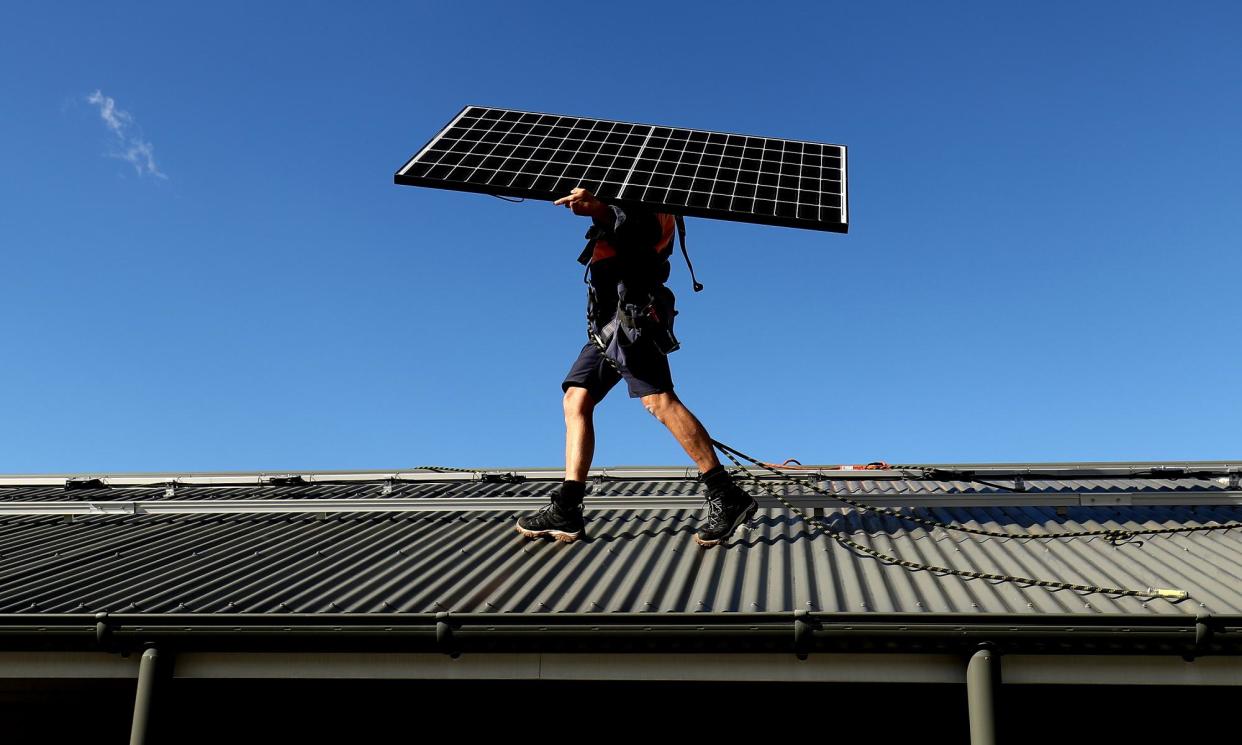Solar installations fall as Australian households hit by cost-of-living squeeze

Household solar installations sank by 14% in June as the broader cost-of-living squeeze curbed demand even as panel prices dropped, according to energy consultancy Sunwiz.
In June, small-scale solar installations totalled almost 250 megawatts in capacity, in line with the same month in 2023. New rooftop installations exceeded 1.5 gigawatts in the first half of 2024, up 6% on the same period last year, Sunwiz said.
“We’ve seen a backwards trend since a super strong May,” said Warwick Johnston, the founder and managing director of Sunwiz. “The cost of living is a significant factor. It’s taking a lot longer from a proposal to progress to a sale.”
Related: Thinking of getting a solar battery? Consider these things first | Doosie Morris
The market slowdown comes despite solar module prices being “well down” on a year earlier as Chinese production ramps up. If households can muster the upfront funds, panels were now “incredibly affordable”, Johnston said.
About one in three Australian homes have solar panels, a figure the Australian Energy Market Operator predicted last week would increase to almost 80% by 2050. The current capacity of about 21GW in small-scale units is expected to reach 72GW by then, it said, citing its main “step change” scenario.
Growth in new rooftop solar systems has averaged 12% over the past five years, making solar panels now three times as common as back yard swimming pools. During the first quarter of 2024, rooftop solar supplied 13% of total generation in the national electricity market, exceeding the shares of utility-scale solar (8.6%), wind power (11.8%), hydro (5.3%) and gas (4.1%), Aemo said.
Johnston said that despite a doubling or more in the time prospective buyers were taking before deciding on a solar system purchase, it was still possible for 2024 to be a record year for installations. The current record year is 2021.
Johnston predicted 2024 would “still finish strongly”, noting commercial purchase of systems of less than 100kiloWatts were performing well so far in 2024.
Residences, though, were opting for smaller units than in recent years as cost pressures limited bigger purchases.
So far, there had been little impact from discussion about the possible impost of a charge in New South Wales on households exporting surplus power to the grid during the middle hours of the day, he said.
Ausgrid estimated the charge would average about $6.60 a year, or 13 cents a week, assuming retailers passed it on.

 Yahoo News
Yahoo News 
